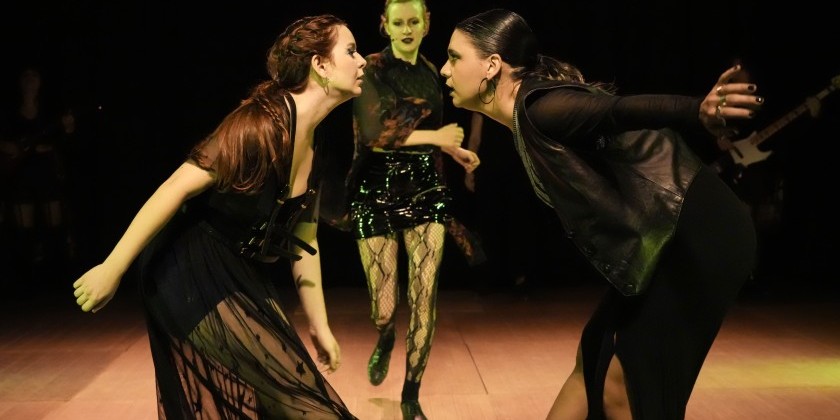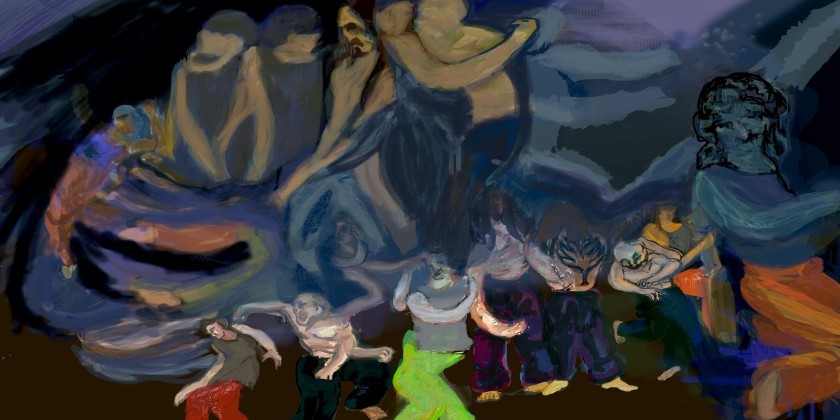AUDIENCE REVIEW: Trey McIntyre Project "Gravity Heroes"

Company:
Trey McIntyre Project "Gravity Heroes"
Performance Date:
03/03/2012
Company / Show / Event
Trey McIntyre Project "Gravity Heroes"
Performance Date
03/03/2012
Venue / Location
Broward Performing Arts Center
Freeform Review:
The Trey McIntyre Project brought an audience to its feet with two standing ovations during the its performance at the Broward Performing Arts Center on March 3. What only the eyes and heart can absorb, words can sometimes be inadequate in trying to describe the impact of McIntyre’s work. His vocabulary is a ballet technique juxtaposed with contemporary, non-stop, expressive movement that exists in a tradition of choreographers’ works that crossed the divide in terms of style, technique, and music – like Bill T. Jones’ D-Man in the Water; Twyla Tharp’s In The Upper Room; or Mark Morris’ Gloria. McIntyre delivers poignant work that is beautiful to watch and experience, and he has created a company and repertory that is accessible.
 |
| Photo by Arts Burst Miami courtesy of Author. |
In a short video that screened right before the intermission, McIntyre revealed the inspiration for Gravity Heroes, a story he heard on public radio’s program Radio-Lab, about people in the 1950s who rode over Niagara Falls in a barrel. He relates this phenomenon to people who seek change in their lives at the sacrifice of the steady ground beneath them — to go beyond the safe confines and take hard painful risks to get closer to what is meaningful to them.
The piece follows dancer Brett Perry as he moves through various stages defined by three movements in the piece. The first movement McIntyre describes as “destruction…a violent way of changing how things are.” In punk attire, designed by costume and set designer Andrea Lauer, Perry uses his own body as the battering ram against a dozen or more donkey-shaped piñatas that descend from the ceiling. The long-limbed Perry snaps frenetically and springs across the stage like an explosive rubber band as he employs his damage on the colorful iconic figures brought down in shattered pieces. He ends the movement slowly disrobing and figuratively shedding his old layer of raw angst and emotion.
The second stage McIntyre describes as “developing a greater understanding of where you are.” In this movement Lauer brilliantly costumed the company in plastic nude-colored or transparent body suits. The flesh-looking costumes leaves the dancers exposed and vulnerable but at the same time creates a democracy within the dancers who are no longer defined by clothes. In a trio that includes Chanel DaSilva, a dancer with great power and presence, Perry continues an exploration of the space and his own body.
Intense solos and duets further develop this section. Meanwhile, far upstage is about half the company awkwardly reclined on chairs, holding a round inflatable ball in their teeth like pregnant thoughts ready to burst yet too impotent to rupture or float away. They are lit by small single floor lamps by Travis Richardson who has created a dark and dim lit stage with yellow hues illuminating the dancers’ skin.
In the final stage of the transformation, McIntyre states that one is now left to find a new path and create a new journey. Once again Lauer transforms Perry and company as they don sky-blue shorts and feathery, open hoodies that billow and float like small wings. In contrast to his earlier solo, Perry’s movement is now contemplative, personal, and intimate. The audience is invited even deeper as Perry breaks the fourth wall and steps to the lip of the proscenium, descends off the stage — and walks up to a woman in the front row. He extends his arms to her as the audience sits in anticipation. She takes hold of his hands and rises as he brings her closer. He embraces her and just as she reciprocates, the lights go out, leaving the word “US” emblazoned on the curtain that had come down.
McIntyre further shares in his “making-of” video that this experience of escaping one’s own gravity to find a new path and purpose is one that is universal and can be enacted upon by us all. Rather humorously, he describes his reluctance to share the meaning behind this piece as people have gone out and quit their jobs and jumped off the “falls.”
The other pieces in the program, In Dreams, set to the music of Roy Orbison, and Blue Until June, set to the music of Etta James, explore through McIntyre’s style the many facets, both beautiful and painful, of human relationships. He describes how many times popular music defines for us what relationships are. But through the melancholic tenor of Orbison or the thrash vocals of James, McIntyre doesn’t interpret the music literally.
Instead he crafts movement and moments that dig into the crevice and edge of each rhythm, note, and tone.
This article also appears in:
artburstmiami.com/2012/03/16/the-trey-mcintyre-project-going-beyond-safe-confines/











